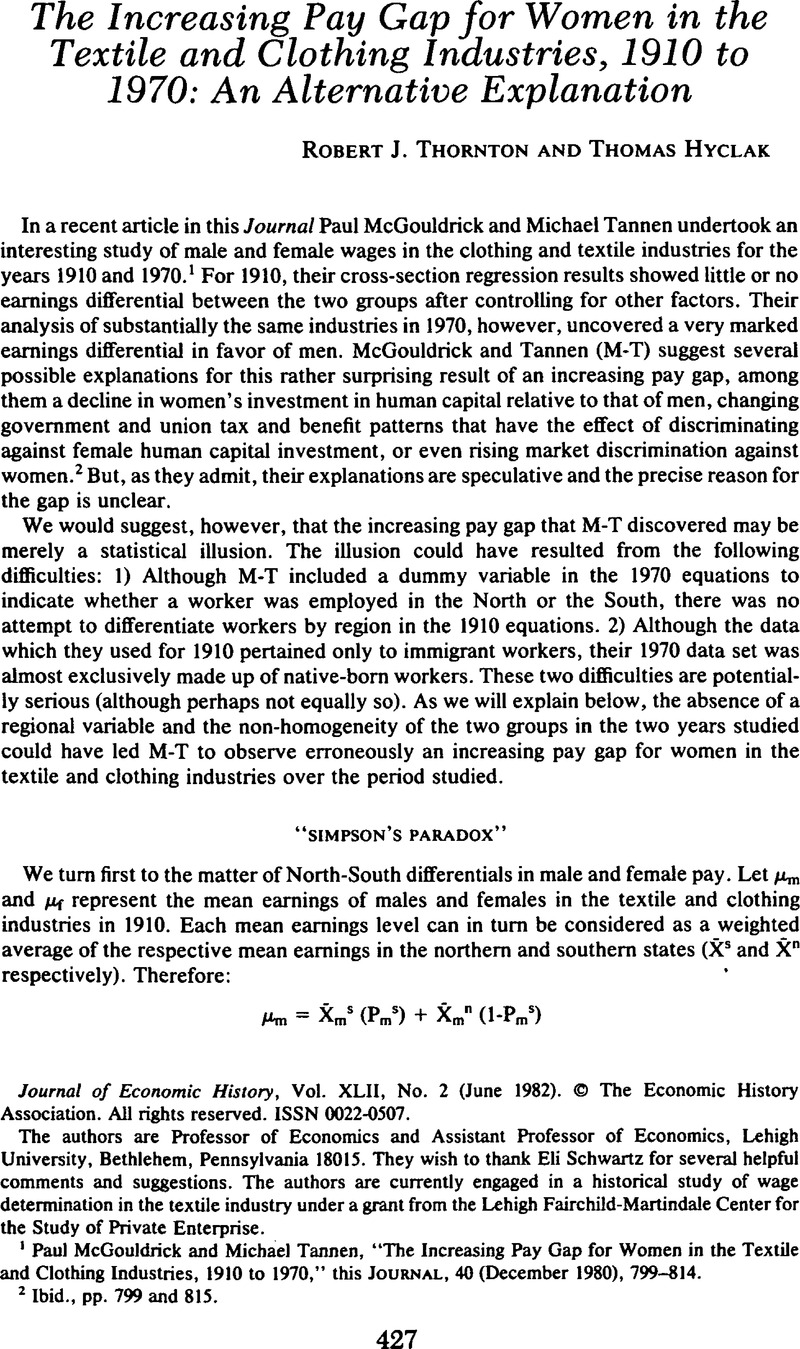Published online by Cambridge University Press: 03 March 2009

1 McGouldrick, Paul and Tannen, Michael, “The Increasing Pay Gap for Women in the Textile and Clothing Industries, 1910 to 1970,” this JOURNAL, 40 (12 1980), 799–814.Google Scholar
2 Ibid., pp. 799 and 815.
3 See Wonnacott, T. and Wonnacott, R., Introductory Statistics for Business and Economics, 2nd ed. (New York, 1977), p. 309.Google Scholar
4 Suppose that northern male earnings were $11.00 per week compared to northern female earnings of $10.50. Suppose also that southern male earnings were $8.50 versus southern female earnings of $8.00. Despite the fact that males received higher earnings in both regions, overall male and female earnings could still be equal at, say, $10.00 per week if only 20 percent of all females were employed in the South while 40 percent of all males were so employed. Arithmetically: μm = $11.00 (.60) + $8.50 (.40) = $10, and μf = $10.50 (.80) + $8.00 (.20) = $10.Google Scholar
5 Alderfer, E. B. and Michl, M. E., Economics of American Industry, 3rd ed. (New York, 1957), p. 353. The percentages are for the years 1912–1920.Google Scholar
6 McGouldrick and Tannen, “Increasing Pay Gap,” p. 800.Google Scholar
7 This fact was not apparent from the M-T article. A check of the U.S. Immigration Commission's multi-volume survey indicated that there was some representation from states in the upper regions of the South (e.g. Baltimore, Maryland was one of four cities represented in the survey of employees in the clothing manufacturing survey).Google Scholar
8 For example, the survey of iron and steel manufacturing includes Birmingham, Alabama, the slaughtering and meat packing industry includes the principal centers of the Southwest, and cigar and tobacco manufacturing includes Tampa, Florida.Google Scholar
9 McGouldrick and Tannen, “Increasing Pay Gap,” p. 808.Google Scholar
10 Calculated from Tables 81 and 82 of Vol. 19 of the Reports of the U.S. Immigration Commission, Immigrants in Industries, pp. 218 and 221.Google Scholar
11 Calculated from Tables 86 and 87, Ibid., pp. 225 and 227.
12 McGouldrick, Paul and Tannen, Michael, “Did American Manufacturers Discriminate Against Immigrants Before 1914?” This JOURNAL 37 (09 1977), 723–46.Google Scholar